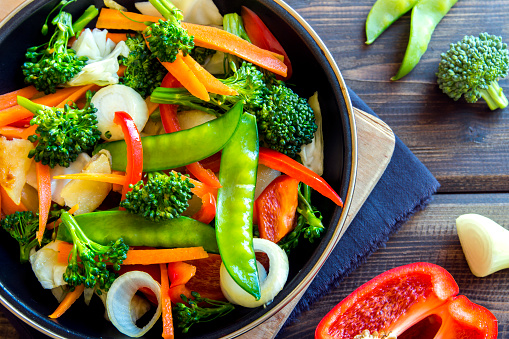
The flexitarian way: less meat and more veggies
This food philosophy allows us to follow a semi-vegetarian diet without completely giving up meat
The term ‘flexitarian’ diet is a combination of the words ‘flexible’ and ‘vegetarian’, and their meanings. Although it sounds like a new trend in healthy eating, it dates back to the nineties, in the United States and the United Kingdom, when it was used to refer to people who eat a vegetarian diet, but who also occasionally eat meat and fish.
The main feature of this type of diet is the frequency with which foods of animal origin are consumed, rather than focusing on allowing some products and banning others.
This food philosophy has a plethora of health benefits. In fact, the World Health Organisation says it is healthier to eat less red and processed meats (hamburgers, sausages, bacon, cold meats, etc.) and five portions of fruits and vegetables a day, to protect from diseases such as diabetes, heart disease and cancer.
Keys to flexitarian eating
- Less meat
This basic premise can help to improve your general health, provided that you get the nutrients it contains from other foods, such as beans or nuts.
- More fresh vegetables
Flexitarians usually pick organic, local produce, whenever possible. This type of agriculture is not only good for your own health, due to the better quality of the fruit and vegetables, but it is also kinder to the environment.
- Food frequency
A flexitarian is a person who does not eat meat or fish more than twice or three times a week. In other words, the term doesn’t apply to a person who makes a vegetarian meal once a week, or who eats little fish and meat, but to people who eat a vegetarian diet, and who occasionally eat animal products.
- More vegetable protein
To replace the animal protein in meat and fish, flexitarians tend to add dairy products, eggs, pulses, leafy green vegetables and soya to their diets, which contain large amounts of vegetable proteins.
- Another type of iron
In the same way as protein, iron of animal origin (paté, foie, offal) is more easily absorbed that that found in vegetables. That’s why you need to include foods like seaweed, sesame seeds, lentils, oats and quinoa, which contain large amounts of this mineral. Remember that citrus fruits, rich in vitamin C, help the body to absorb the iron in these sprouted grains.
- Better cardiovascular health
Recent studies have shown that eating less than 50 grams of red meat per day is associated with fewer fatal cases of heart-related disease, therefore eating around 150-200 grams of meat per week can improve your overall health. Likewise, increasing your fruit and vegetable consumption helps to control body weight and reduce the risk of suffering metabolic conditions such as obesity and type 2 diabetes.
In light of recent health warnings about excessive meat consumption, a diet containing more fruits and vegetables can be very beneficial to overall health.
This post is also available in: Italian
